This post contains affiliate links.
Is the sequel even better than the original? I suppose it depends on who you ask, but this second version of the “Viking” model by Voyager houses has a lot going for it. In this iteration, they have a larger wall of separation between the dining and sleeping area, and there’s the addition of a cozy wood stove!
This one has a shelving unit in place of the original washer/dryer combo, which works great if you have access to another laundry source. It looks like this home is nestled on a farm with a greenhouse and a “big house,” and is likely used as an Airbnb or guest accommodations. What do you think of the Viking series?
Don’t miss other interesting tiny homes like this one – join our FREE Tiny House Newsletter for more!
The Viking 2 Modern Tiny House
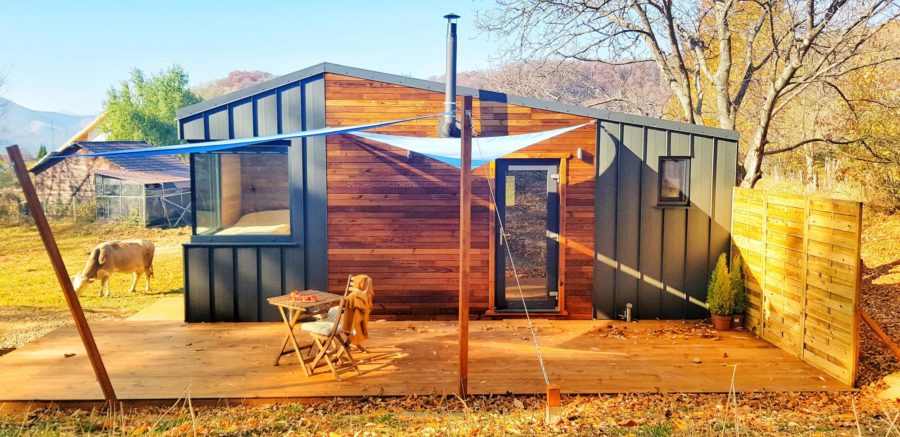
Images via Voyager Houses
I love the “sails” they used here for shade.
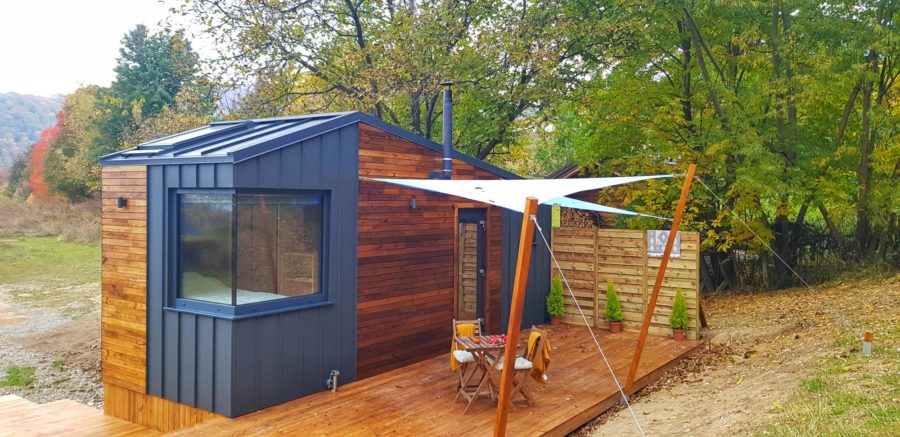
Images via Voyager Houses
A perfect spot for an outdoor lunch.
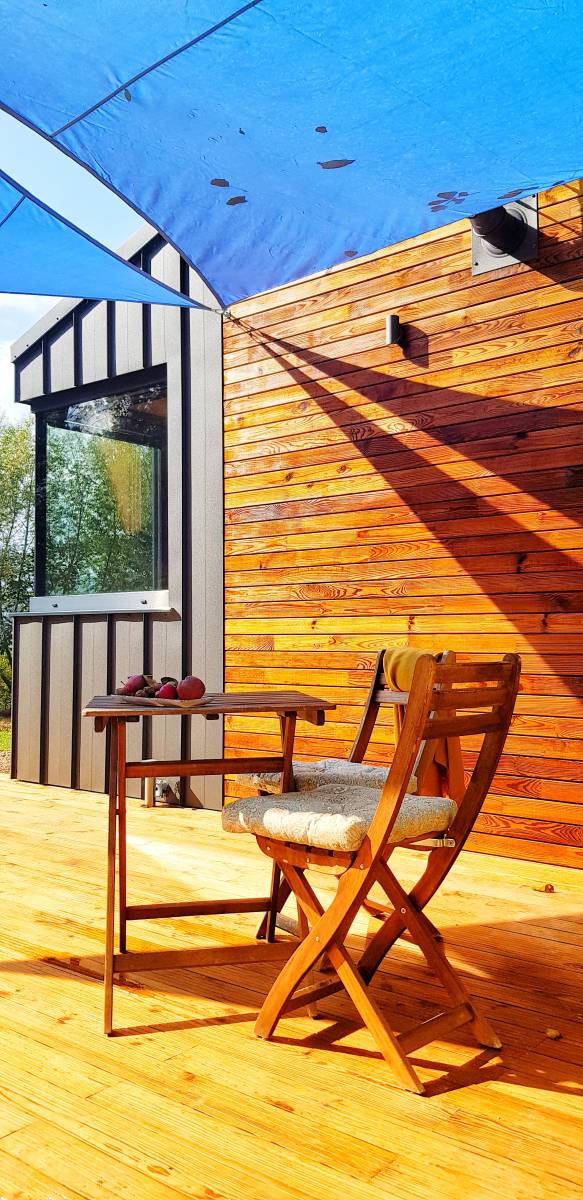
Images via Voyager Houses
It looks really cool at night, and how do you like this corner window?
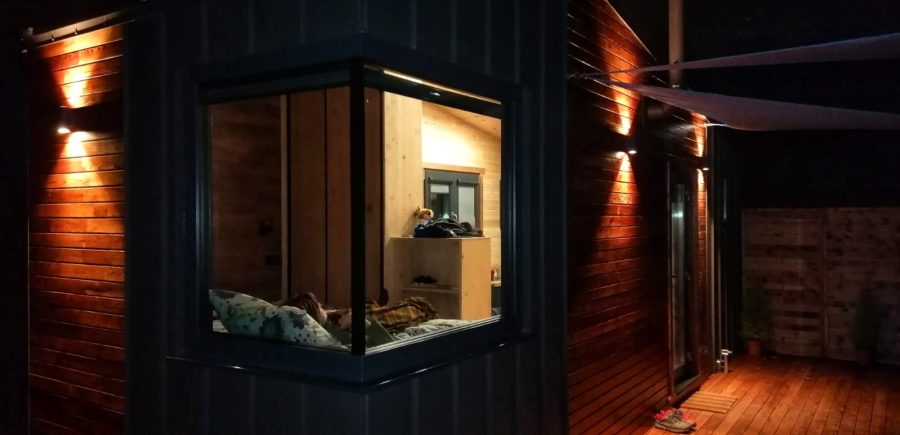
Images via Voyager Houses
Nordic pine inside, with dark cabinetry.
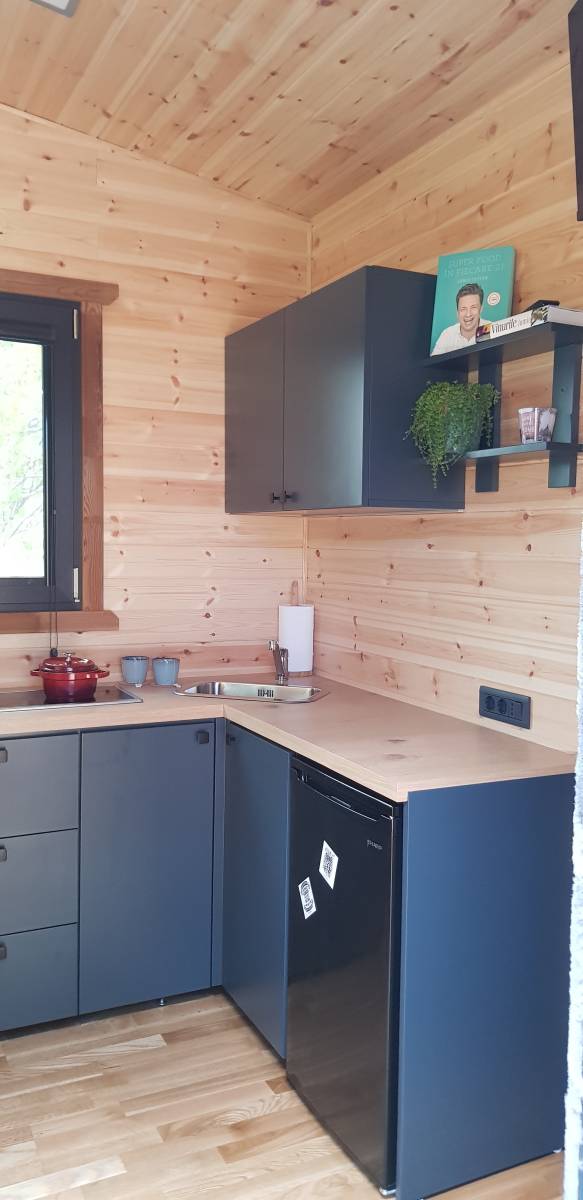
Images via Voyager Houses
You can see the partition here.
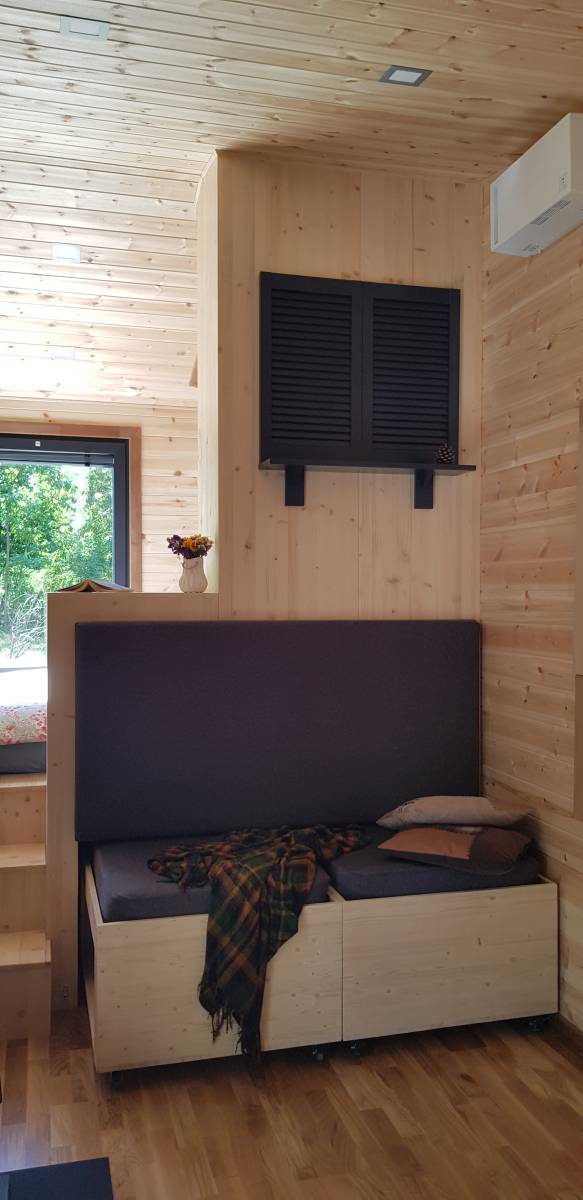
Images via Voyager Houses
Flip-up table for mealtime.
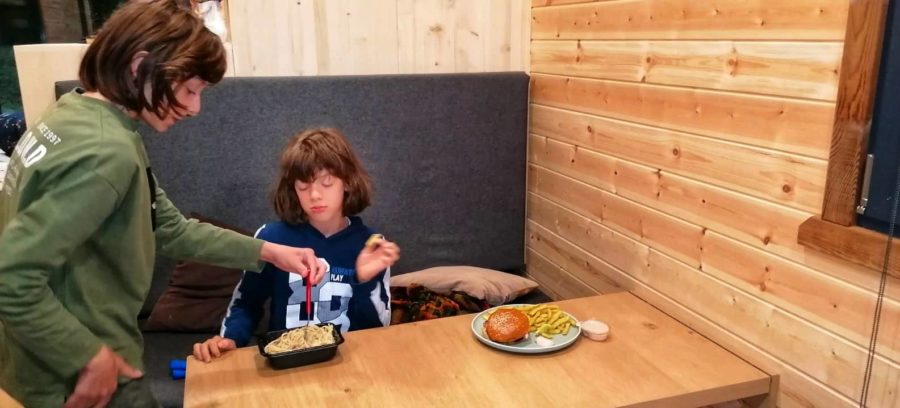
Images via Voyager Houses
The cozy bed on the other side. It’s perfect!
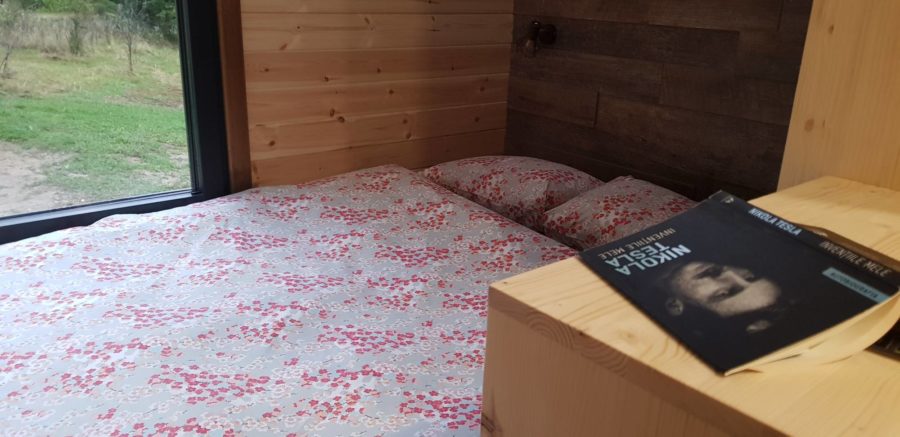
Images via Voyager Houses
There’s even a wood-burning stove here.
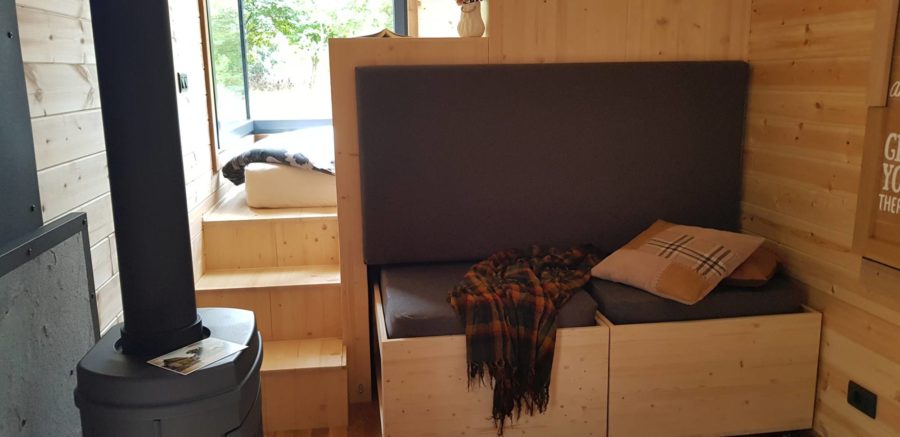
Images via Voyager Houses
Another look at the kitchen area.
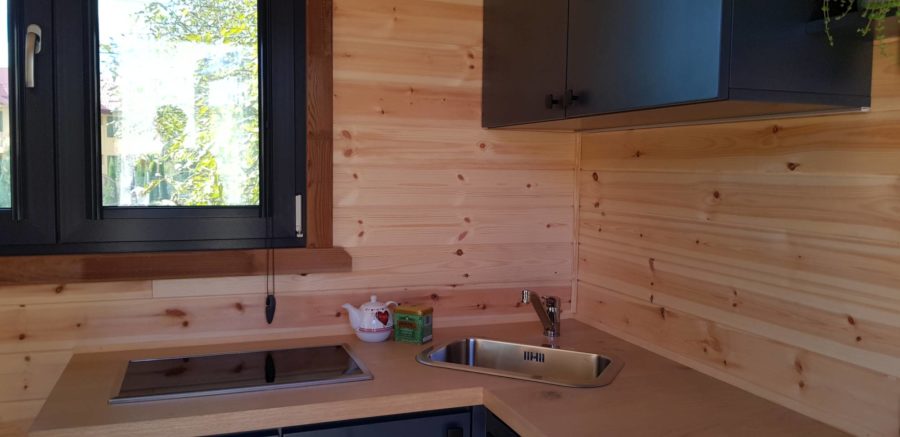
Images via Voyager Houses
What do you like most about it so far?
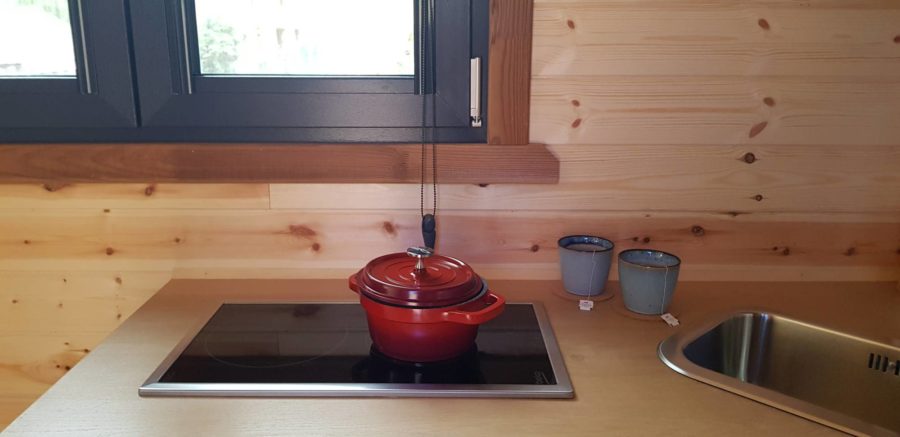
Images via Voyager Houses
Storage next to the shower stall.
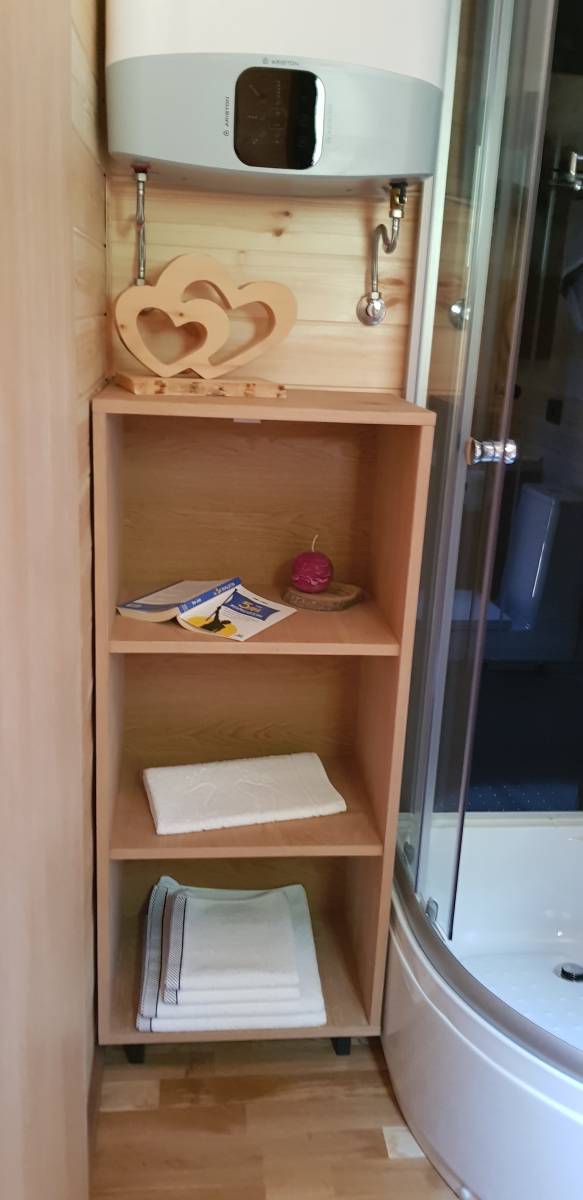
Images via Voyager Houses
You can see the “big house” off in the distance.
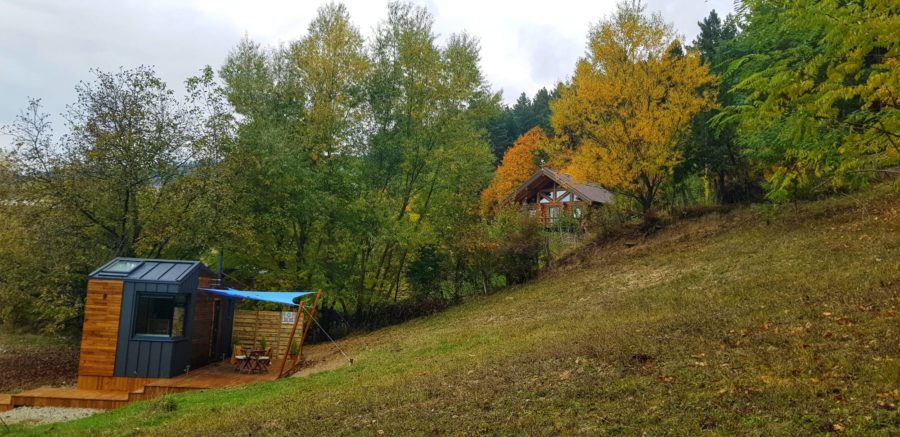
Images via Voyager Houses
Highlights:
Size (exterior)
7.20 X 2.52 X 3.95 meters (thanks to ingeniosity, this is now enough)
Weight
3.5 Tones (can be towed with a B+E driving license)
Wood
NORDIC PINE
Insulation
ROCKWOOL / SHEEP WOOL (highly effective for temperature & sound isolation)
Heating System
ELECTRIC
Water Heating
ELECTRIC
Trailer
VLEMMIX / AL-KO (Top Rated in Europe – safe and reliable)
Dimensions in feet and weight in pounds
- 24′ x 8′ x 13′
- 7,000 lbs. (approximately)
Learn more:
Related stories:
- Multi-functional Viking 1 Tiny House by Voyager Houses
- Kay’s 280 Sq. Ft. THOW Has an Amazing Bedroom & Closet!
- NOAH-Certified Luxury Big Blue Gooseneck THOW
Our big thanks to Pavelina for sharing! 🙏
You can share this using the e-mail and social media re-share buttons below. Thanks!
If you enjoyed this you’ll LOVE our Free Daily Tiny House Newsletter with even more!
You can also join our Small House Newsletter!
Also, try our Tiny Houses For Sale Newsletter! Thank you!
More Like This: Tiny Houses | THOWs | Tiny House Builders | Tiny Homes for Sale
See The Latest: Go Back Home to See Our Latest Tiny Houses
This post contains affiliate links.
Natalie C. McKee
Latest posts by Natalie C. McKee (see all)
- 714 Sq. Ft. Cabin in the Woods - April 24, 2024
- Boho XL Tiny House with Shou Sugi Ban Siding - April 24, 2024
- Kentucky Tiny House in the Woods - April 24, 2024




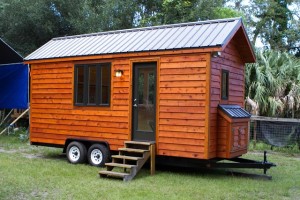

…and that looks suspiciously like an induction stove top. A first for Tinyhousetalk methinks.
First? Nope, seen many times before going back years… Just harder to use them off-grid and still plenty of people who prefer gas…
…possibly, my memory ain’t what it used to be. Except I won’t use gas, seen, and experienced far too many accidents with them.
My sister used to have gas in her home. She went induction because of the danger of gas. Especially after 2 incidents 1 of which very nearly cost her life.
Induction can also be used in tiny homes quite easily. Maybe your harder and my harder don’t quite match up. But I agree with you on plenty of people preferring gas, but, they might change their mind if they used induction. Look at the benefits. No naked flame to set fire to all manner of things. Instant heat, as does gas. No bottles to fill up with gas (a BIG plus from my point of view) and the space they take up. And in tiny homes they could get away with 1 or 2 elements because, in the main, there are usually a maximum of 3 occasionally 4 people.
Yes, the dangers of gas becomes increasing a issue as homes become more air-tight. Something that becomes clearer once people start learning about home chemistry and home performance, and it can become even more of a concern in a small and confining space. While it’s one of the reasons proper venting in the kitchen is becoming mandated in the building codes.
However, doesn’t change there’s still many people who just prefer cooking with gas and will continue to choose that option even when they’re aware of the negatives.
While difficulty is very simply that not every tiny home will have the proper set up to support cooking with electricity no matter how efficient. Especially, when living off-grid where they have to provide their own power and cooking is often not the only need to be supported.
Mind, Induction requires a minimum of 1800W to support its full cooking capacity and that can go up the more cooking elements it has to support. If you want a four-element induction each having a maximum power of 1.8KW. The power output would be 4* 1.8= 7.2KW. That would require an AMPS of 7200/240= 30 AMPS.
While tiny houses, especially those on wheels, may have only a total of 30/50A service for 120v. Some may even just be connected to an extension cord to a main house that’s just on a 15/20A circuit and that has to power everything in the tiny house. Similarly, those off-grid may only have a small set up that’s only providing enough power for a small fridge, lights, and powering small personal electronics but can’t support anything that generates significant heat.
So it’s those who I’m referring to with “harder to use”…